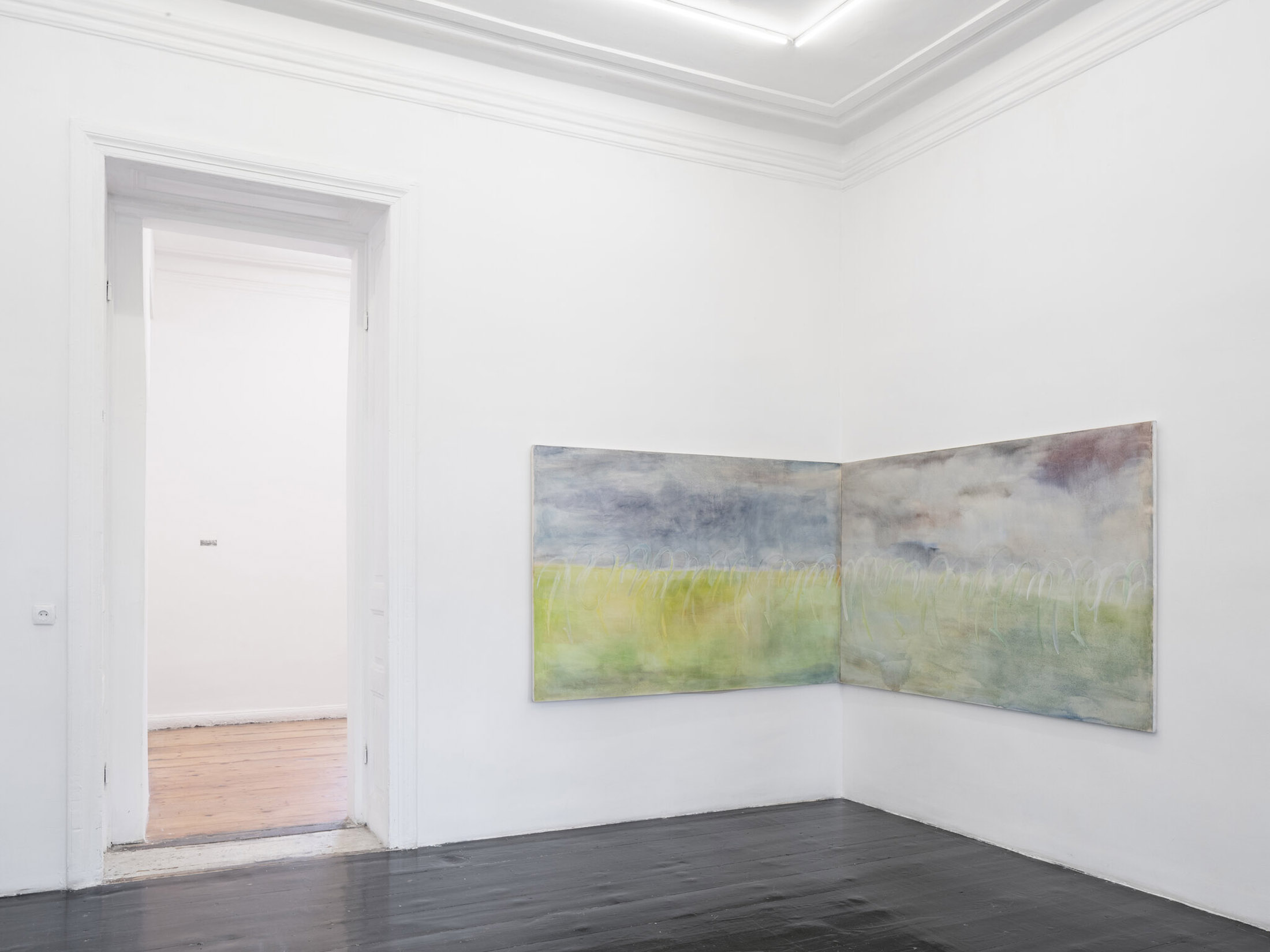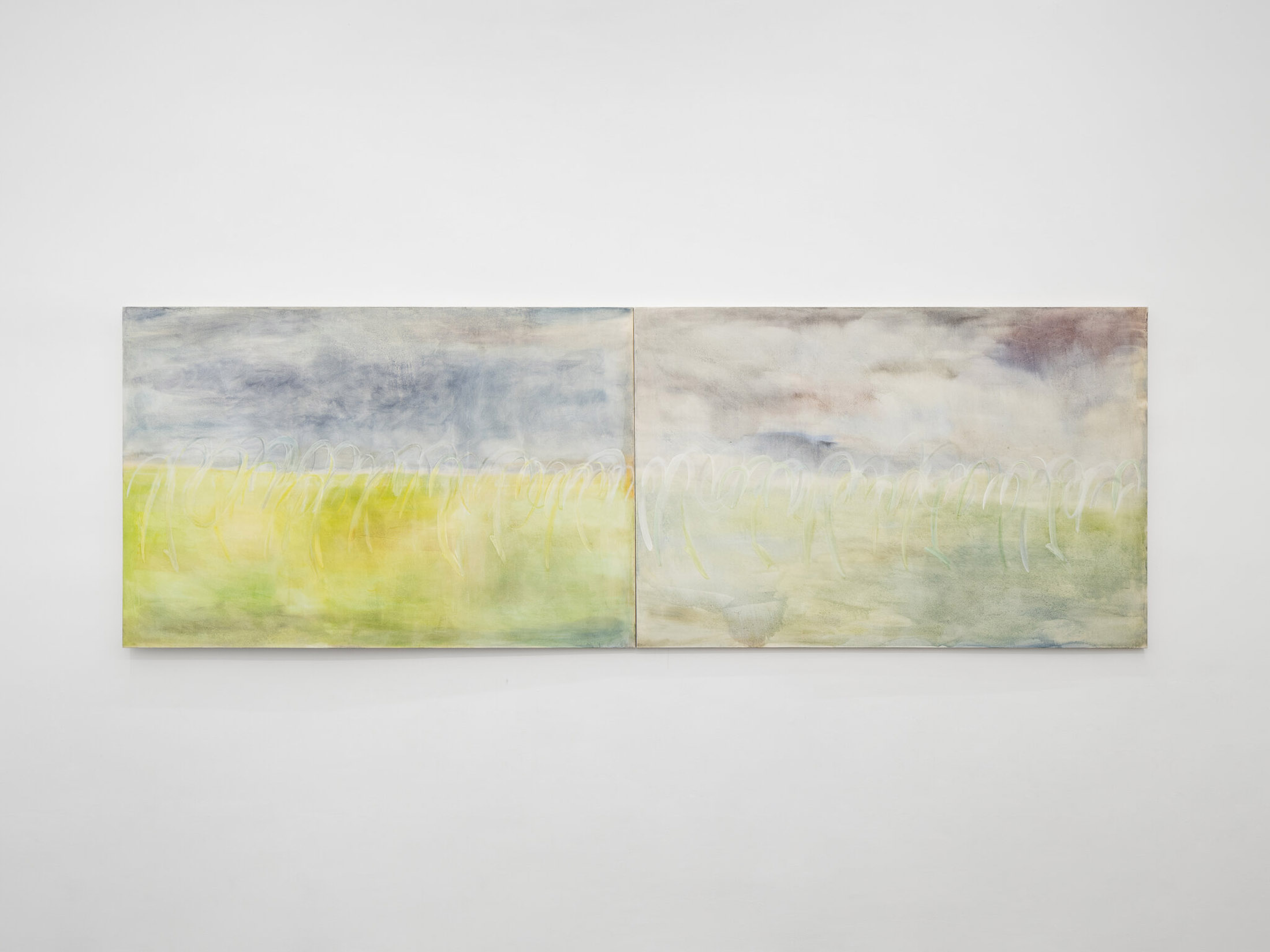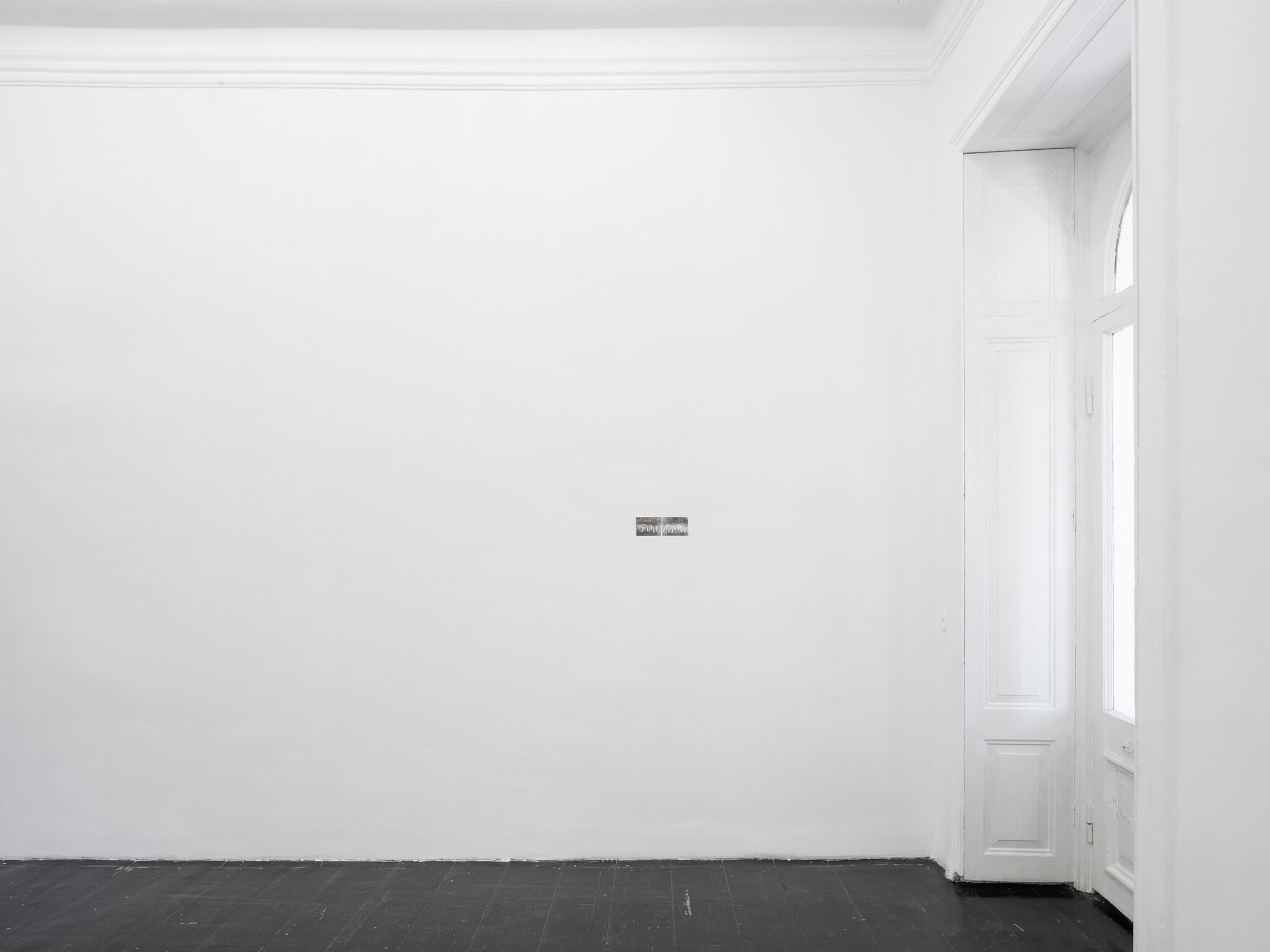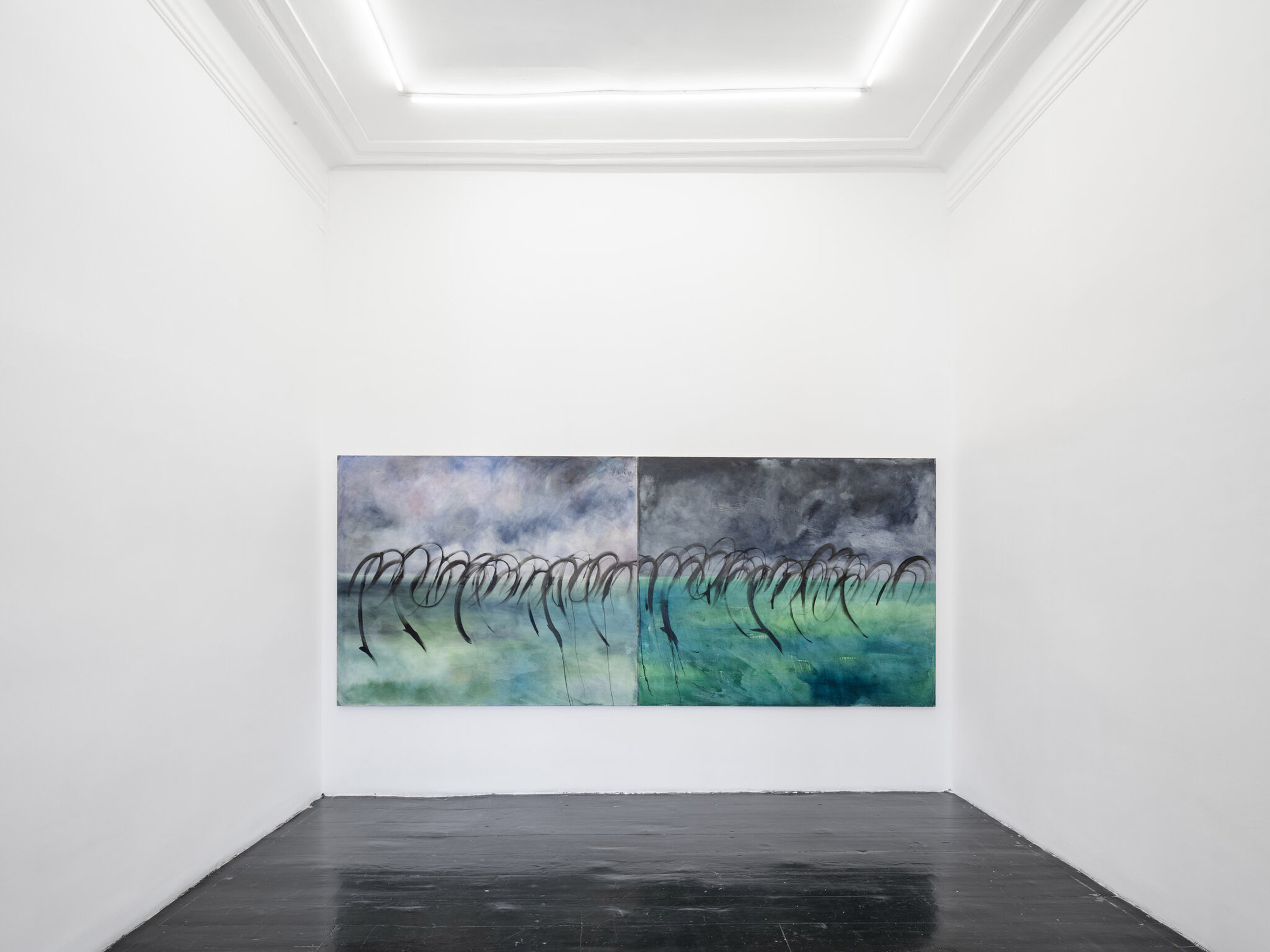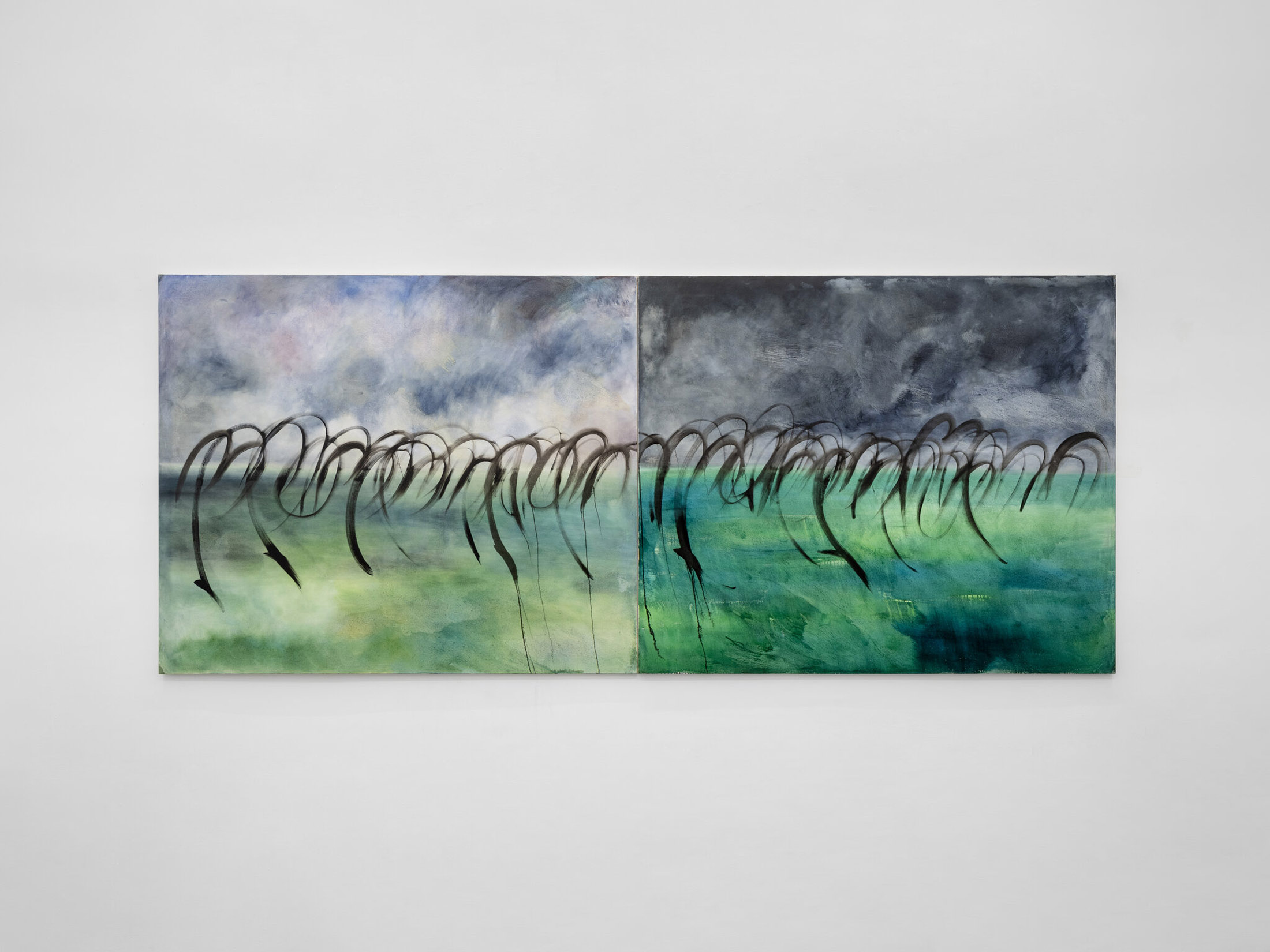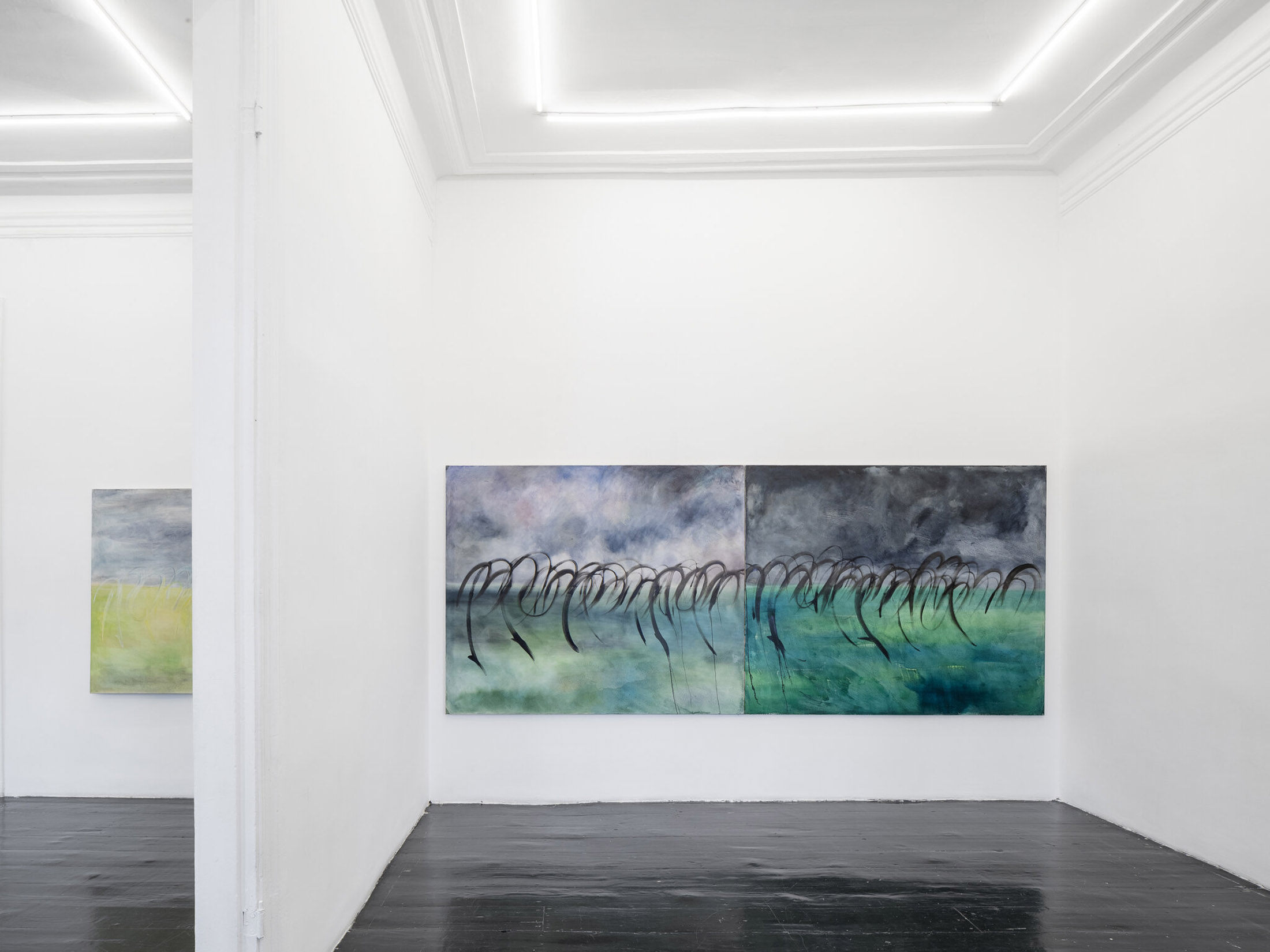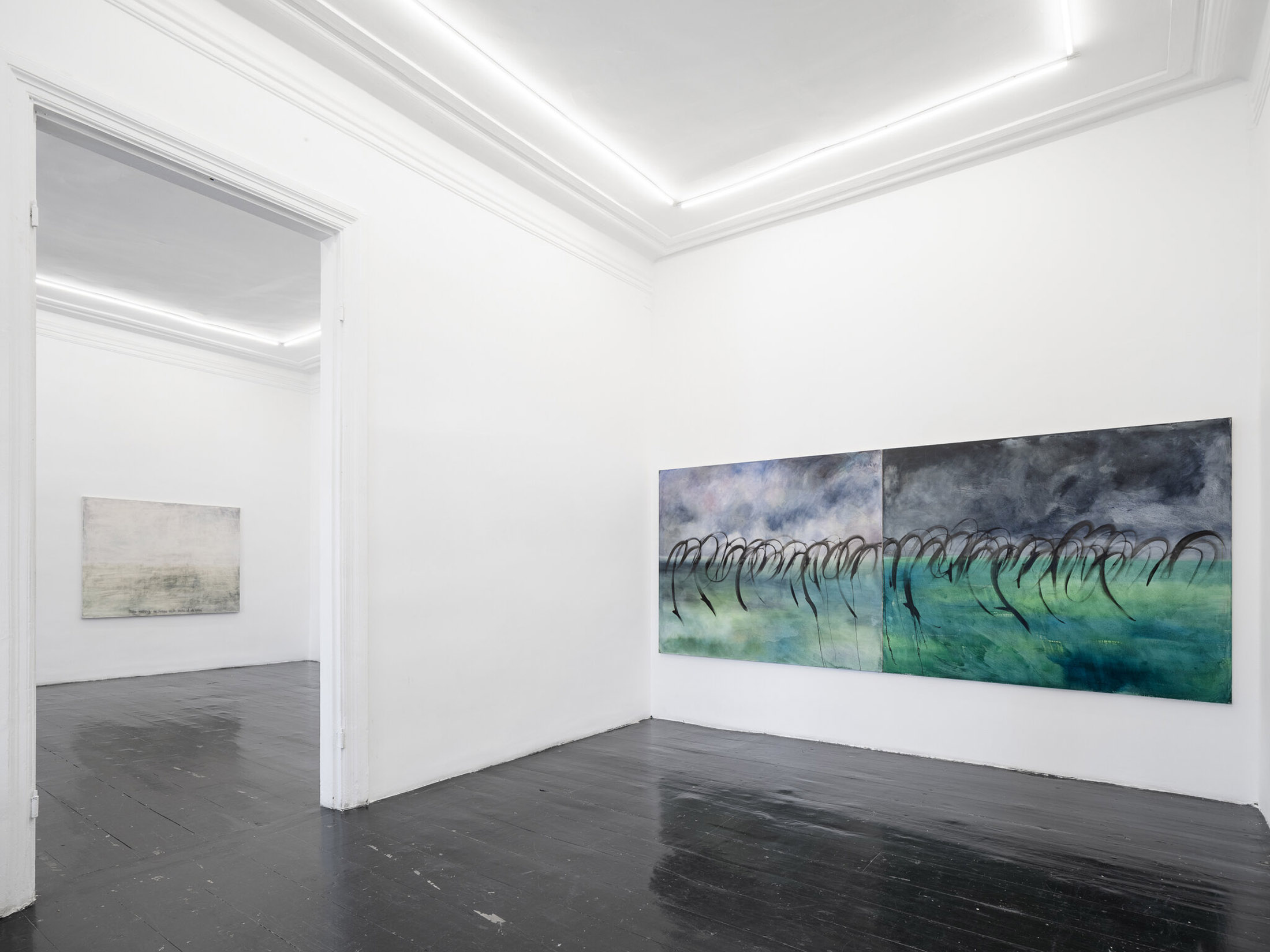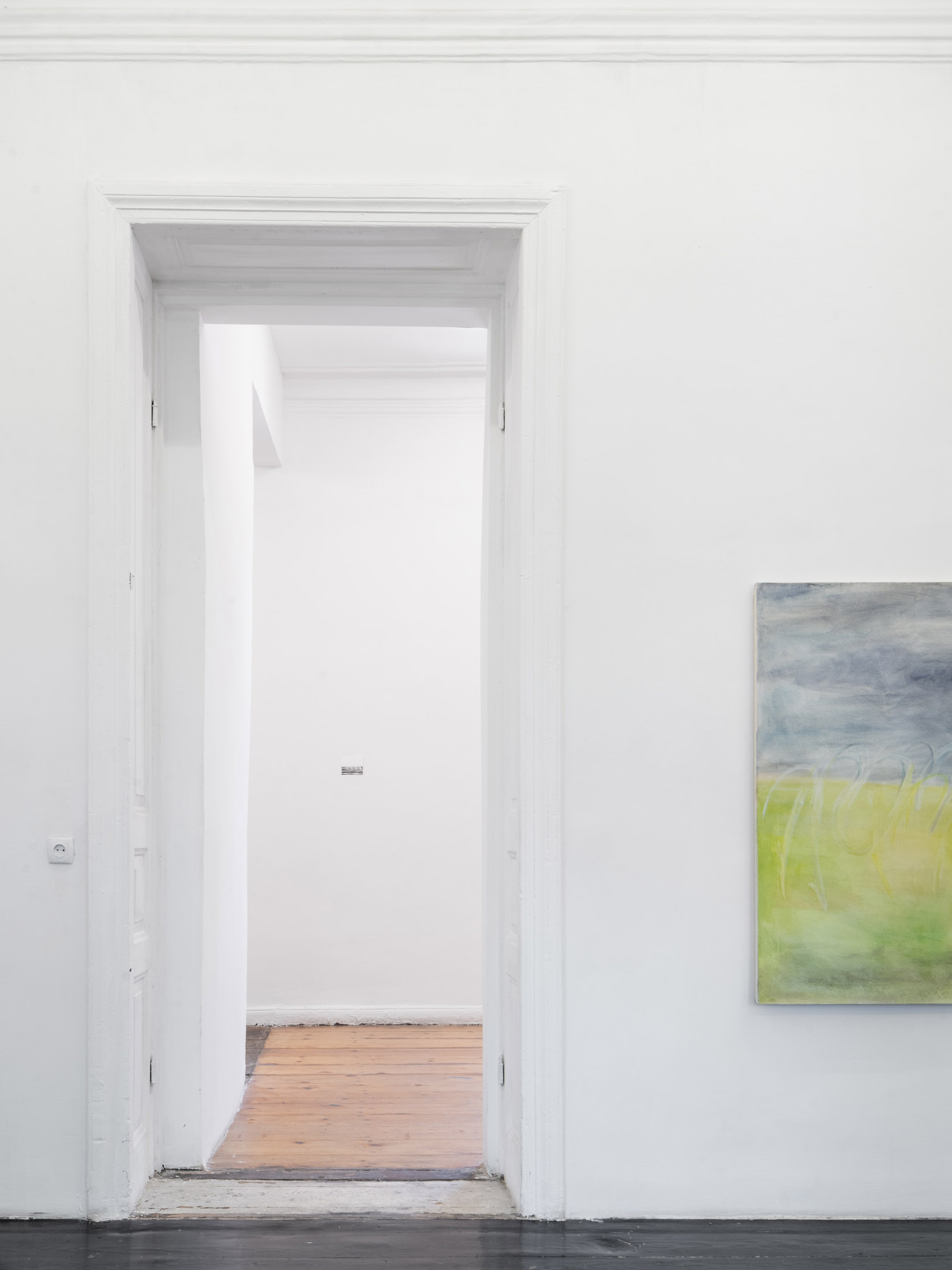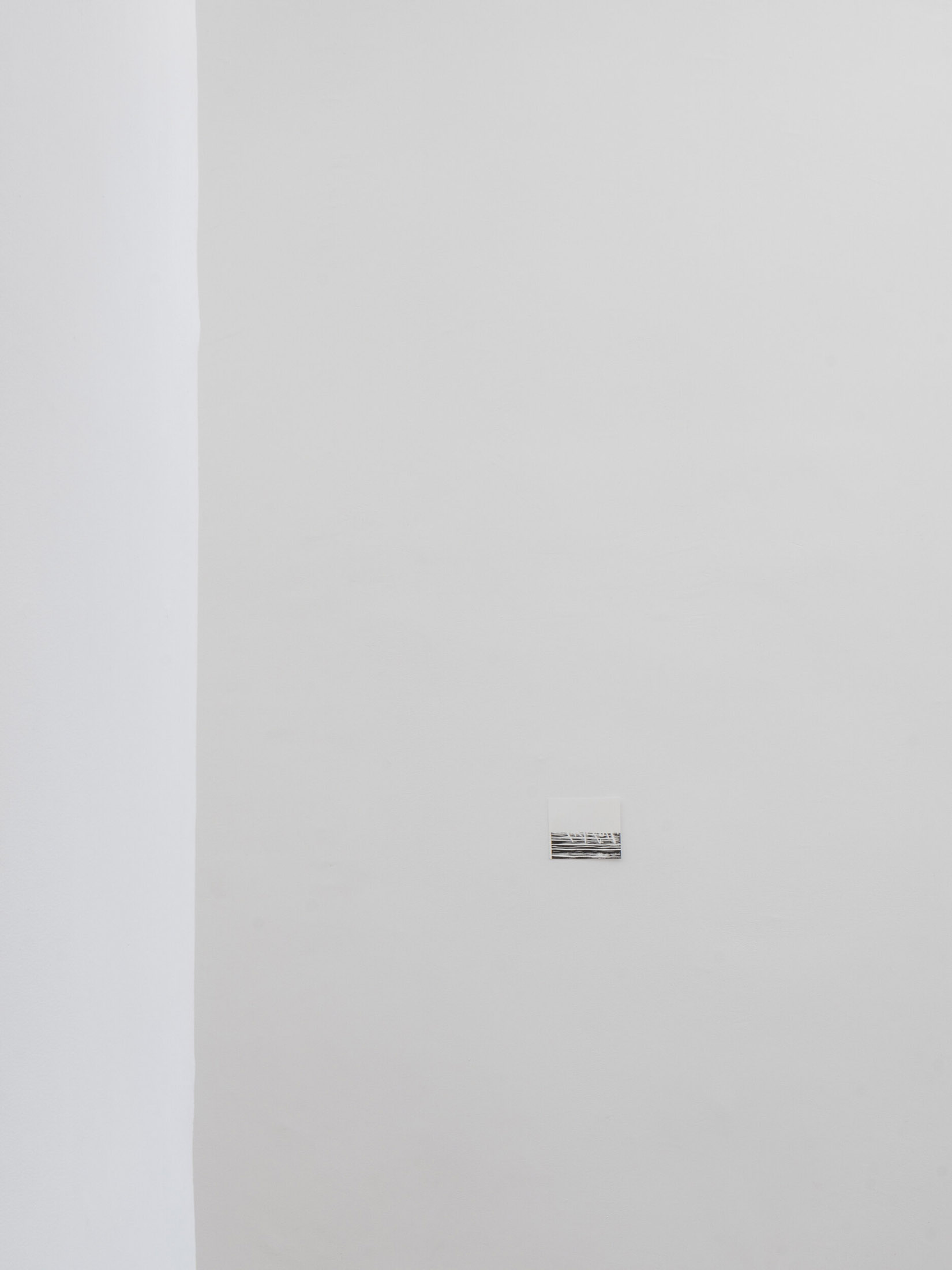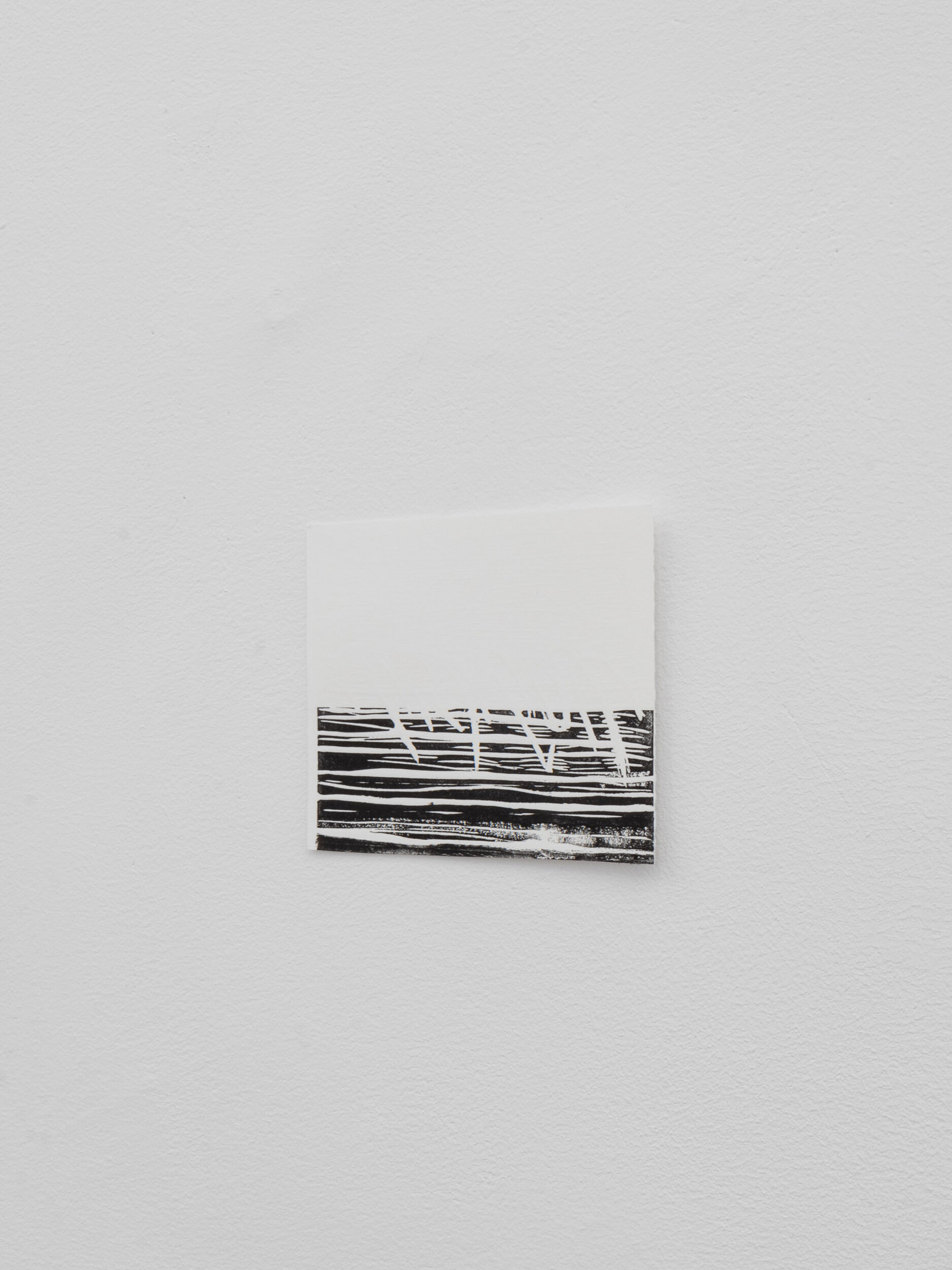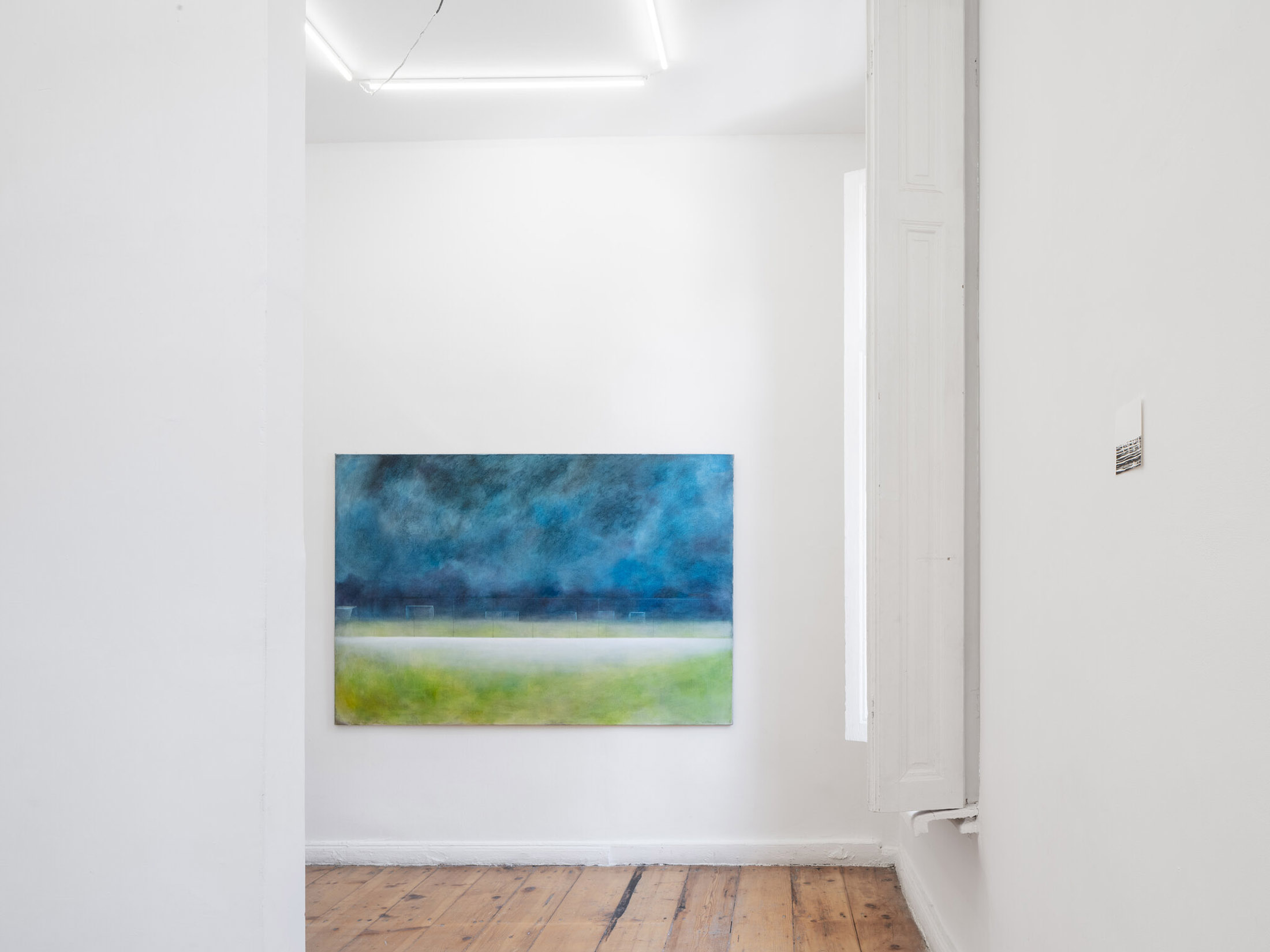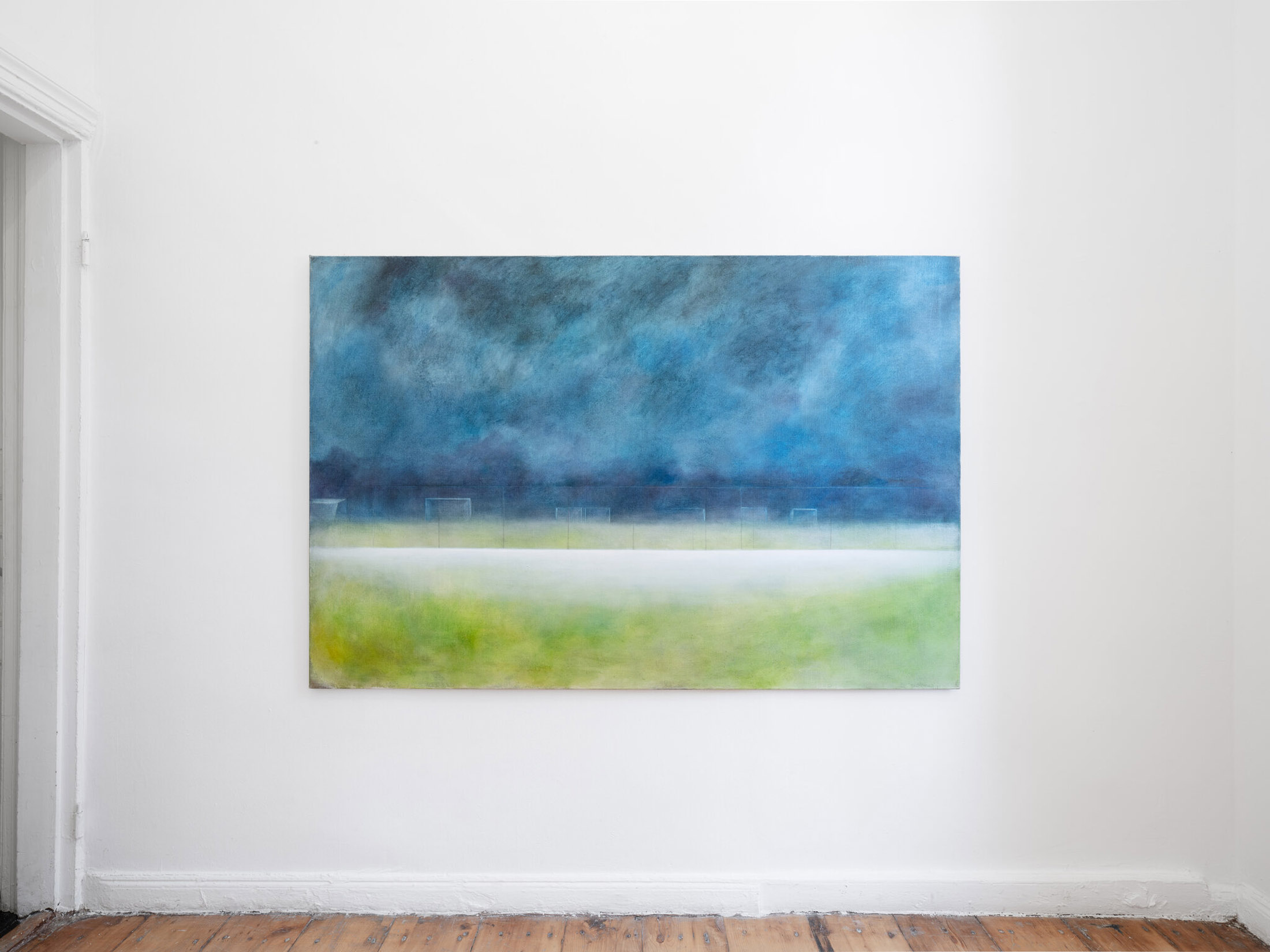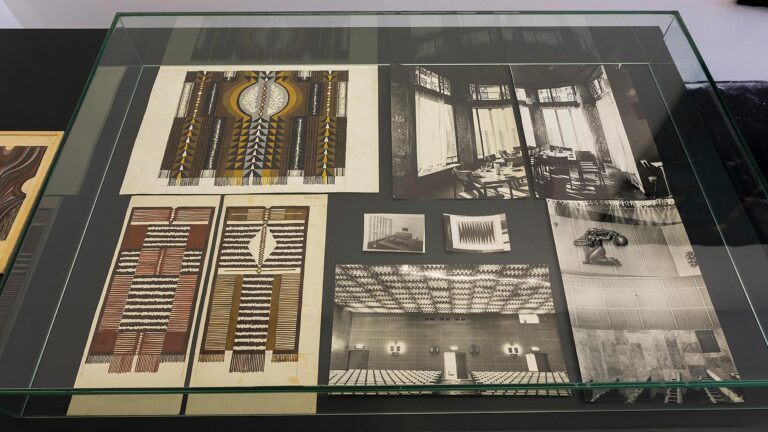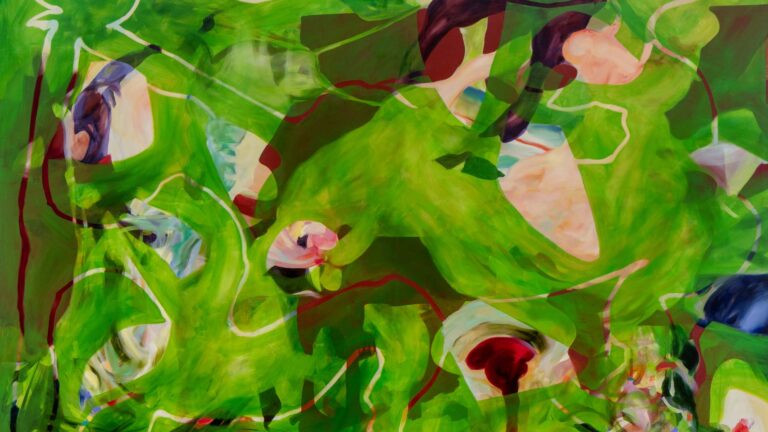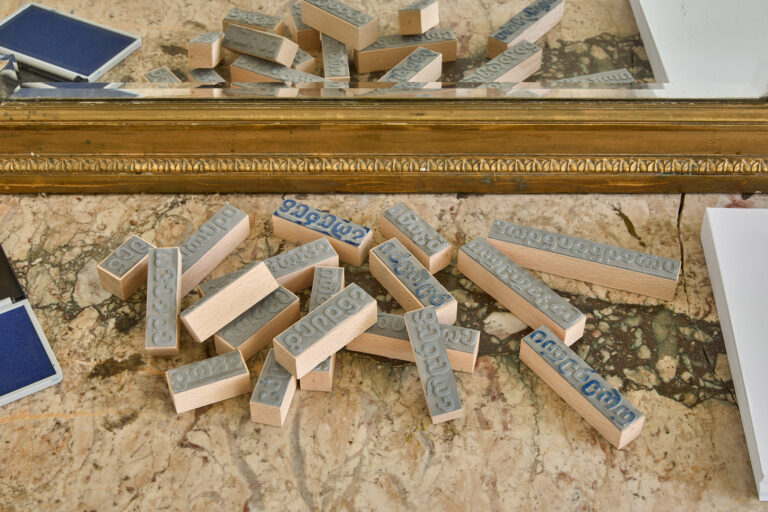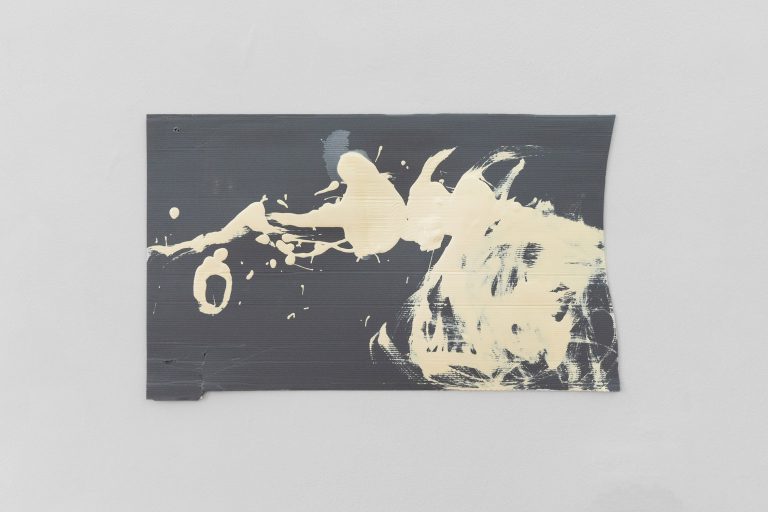Artist: Nino Kapanadze
Exhibition title: დოღი[Doghi]
Venue: LC Queisser, Tbilisi, Georgia
Date: July 15 – September 3, 2023
Photography: all images copyright and courtesy of the artist and LC Queisser
LC Queisser is pleased to present დოღი [Doghi], Nino Kapanadze’s first solo exhibition with the gallery, opening on July 15. The exhibition features a selection of recent paintings by Paris-based Georgian artist, including two diptychs completed under the Horserace series that emerged in 2021, reverberating in the titling of the show, followed by corresponding watercolors on paper and lithographic prints, and two separate paintings that developed parallel to the series. In her signally observant painterly practice, Kapanadze cautiously draws upon visual and literary references ranging from ancient, classical, and modern art historical traditions to contemporary principles of image-making.
“…any time we decide to speak up and even more so to write down something, we risk sounding dumb,” writes the artist in her essay How To Draw A Horse, read in 2022 at the Foundation Pernod Ricard, Paris, in correspondence to Mark Strand’s interview statement with Karl Elder. For equivocal reasonings, one resorts to spelling out the concern-relevant subject matter in an almost primitive or Martha Roslerian monotonous temper when faced with phrenic exhaustion. Kapanadze’s monologue-style explanatory essay on how to draw a horse, or more so why to draw a horse, similarly finished with a chronological recital of all the equine phantoms – Assyrian horses, Lion Hunt of Ashurbanipal reliefs from Nineveh, Greek horses, Roman horses, Medieval horses, Early Renaissance horses, Uccello’s The Battle of San Romano, Late Renaissance horses, All the horses of George Stubbs, Eugène Delacroix’s Horse Frightened by Lightning, Edgar Degas’ Before the Race, and At the Races, Raoul Dufy’s Le Cavalier arabe, Erich Heckel’s Reiter, Apollon Kutateladze’s Battle of Queen Tamar, Susan Rothenberg’s horses – like an exorcism ahead of approaching the oldest artistic motif of human history.
Referred large-scale abstract paintings of Nino Kapanadze spell out Doghi in the latest Georgian script Mkhedruli [cavalry]. Initially utilized for secular writing as opposed to the two prior writing systems Asomtavruli and Nuskhuri, it derives from mkhedari, a native word for a horseman, and allows one to write in cursive or flowing looped manner. Kapanadze’s final rendering of the violent elegance of the animals witnessed in ceremonial horseraces, held annually in Iarajulebi (a village in the Caucasus mountains) in honor of the deceased with one riderless horse (consecrated to the late’s spirit), becomes mere lettering of დოღი. Barely suggesting the morphology and gait of a horse by hurried, rough lines, the symbolism embedded in this perpetual motion creates a universal vocabulary of patterned movement. As a result of her formal experimentation with Equestrian painting, the artist’s thought trajectories in visual articulation, the long mental bouts, become traceable in a rather evidential physical form of handwriting. The oval dynamism here transcends the futurist lust to tame the fleeting moment, the forceful full gallop. Instead, Kapanadze captures the moving subjects through foregrounding vertical brushstrokes or its ephemeral traces concluding in downsloping curves, looking down at the earth, while a representation of any environment employs a straightforward, binary tactic, splitting the sky and land with a soft luminous crust right in the middle. Abstracted serene backgrounds emerge desolate landscapes, which succeed in constructing an ethereal space beyond the confined frame through reduction and erasure. Like the sole free-roaming “spirit horse” (consecrated to the deceased) at Doghi, still harnessed with a saddle, the artist grasps figures via their absence and materiality of the space via particular humidity that fills her canvas.
-Gvatnsa Jgushia
Nino Kapanadze, დოღი[Doghi], 2023, exhibition view, LC Queisser, Tbilisi
Nino Kapanadze, დოღი[Doghi], 2023, exhibition view, LC Queisser, Tbilisi
Nino Kapanadze, დოღი[Doghi], 2023, exhibition view, LC Queisser, Tbilisi
Nino Kapanadze, დოღი[Doghi], 2023, exhibition view, LC Queisser, Tbilisi
Nino Kapanadze, დოღი II (traces), 2022, Oil on cotton, 130 × 390 cm
Nino Kapanadze, დოღი[Doghi], 2023, exhibition view, LC Queisser, Tbilisi
Nino Kapanadze, Untitled (sea), 2021, oil on cotton, 162 × 130 cm
Nino Kapanadze, დოღი[Doghi], 2023, exhibition view, LC Queisser, Tbilisi
Nino Kapanadze, დოღი[Doghi], 2023, exhibition view, LC Queisser, Tbilisi
Nino Kapanadze, Untitled, 2021, Lithography print, each: 24 × 9 cm
Nino Kapanadze, დოღი[Doghi], 2023, exhibition view, LC Queisser, Tbilisi
Nino Kapanadze, დოღი III, 2023, Oil and natural pigments on cotton, 153 × 366 cm
Nino Kapanadze, დოღი[Doghi], 2023, exhibition view, LC Queisser, Tbilisi
Nino Kapanadze, დოღი[Doghi], 2023, exhibition view, LC Queisser, Tbilisi
Nino Kapanadze, დოღი[Doghi], 2023, exhibition view, LC Queisser, Tbilisi
Nino Kapanadze, დოღი[Doghi], 2023, exhibition view, LC Queisser, Tbilisi
Nino Kapanadze, Untitled, 2021, Linogravure print, each: 13 × 11 cm
Nino Kapanadze, Untitled, 2022, Japanese gansai watercolor on paper, 29 × 266 cm
Nino Kapanadze, დოღი[Doghi], 2023, exhibition view, LC Queisser, Tbilisi
Nino Kapanadze, Untitled (stadium), 2023, oil on linen, 130 × 195 cm
Nino Kapanadze, Untitled (stadium), 2023, oil on linen, 130 × 195 cm




